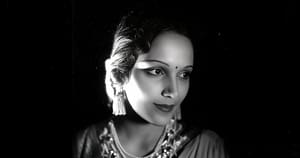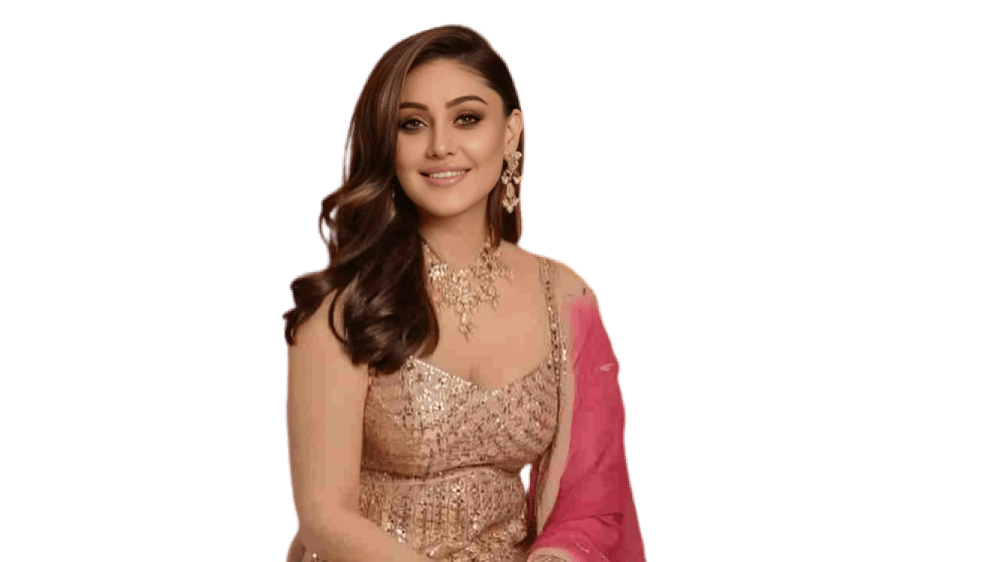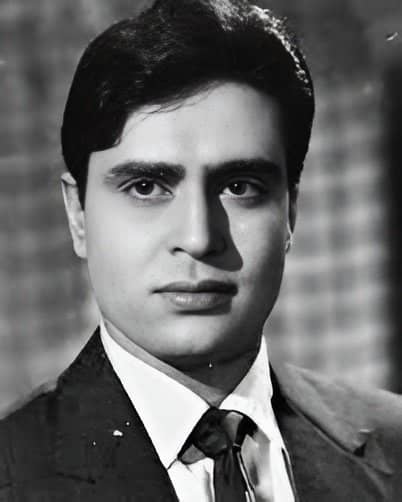
Devika Rani, hailed as the “First Lady of Indian Cinema,” was a pioneering actress, singer, producer, and studio executive who carved a niche for herself in the male-dominated film industry of early 20th century India. Known for her beauty, intelligence, and immense contribution to Indian cinema, she was a woman far ahead of her time. Her name is synonymous with elegance, courage, and path-breaking cinematic achievements. She was not only a successful actress but also the co-founder of Bombay Talkies, one of India’s most influential early film studios.
Early Life and Education
Devika Rani Chaudhuri was born on March 30, 1908, in Waltair, Madras Presidency, British India (now Visakhapatnam, Andhra Pradesh). She belonged to an elite Bengali family with a strong academic and cultural background. Her father, Col. M.N. Chaudhuri, was a distinguished physician and the first Indian Surgeon-General of Madras Presidency. Her mother, Leela Chaudhuri, ensured Devika was raised with liberal values and exposure to art, music, and literature.
She was the grand-niece of Nobel Laureate Rabindranath Tagore, and this literary lineage heavily influenced her upbringing. Devika received her early education in India and was later sent to England at the age of sixteen to study arts.
She pursued her higher studies in architecture, textile design, and decorative arts at the Royal Academy of Dramatic Arts (RADA) and Royal Academy of Music, London, where she also received training in acting and singing. Her years in Europe refined her personality, introduced her to Western culture, and ignited her passion for cinema and stagecraft.
Meeting Himanshu Rai and Entry into Films
While in London, Devika met Himanshu Rai, a barrister-turned-filmmaker who was deeply involved in Indo-European cinema. Rai was working on a film titled “A Throw of Dice” (1929) and later “Karma” (1933). Impressed by Devika’s charm, education, and dramatic skills, Rai cast her as the lead actress opposite himself in Karma.
Karma was a bilingual film made in English and Hindi and marked Devika’s acting debut. It featured the first on-screen kiss in Indian cinema, which created quite a stir. Though the film was aimed at Western audiences and wasn’t released widely in India, Devika’s performance was noted for its poise and grace. She and Himanshu Rai soon fell in love and got married in 1929, beginning both a personal and professional partnership.
Founding of Bombay Talkies
In 1934, Devika Rani and Himanshu Rai co-founded Bombay Talkies, based in Malad, Mumbai. It was one of the first modern film studios in India equipped with German technology and a team of skilled technicians trained in Europe.
Bombay Talkies was instrumental in transforming Indian cinema from mythological tales to socially relevant stories and featured real-life characters with nuanced performances. The studio introduced several future legends of Indian cinema including Ashok Kumar, Leela Chitnis, Mumtaz Shanti, and even gave a platform to Dilip Kumar and Raj Kapoor in later years.
Devika not only starred in many of the studio’s films but also handled production, costume design, art direction, and even administration. She was one of the first women to take on such diverse roles in Indian cinema, at a time when the film industry was predominantly male-oriented.
Rise to Stardom
Devika Rani starred in several critically and commercially successful films during the 1930s and early 1940s. Some of her most acclaimed works include:
- Achhut Kanya (1936)
One of the most socially significant films of its time, Achhut Kanya tackled caste-based discrimination and untouchability. Devika played the role of an ‘untouchable’ girl in love with a Brahmin boy (played by Ashok Kumar). Their chemistry was lauded and became a turning point in both their careers. The film is considered a landmark in early Indian social cinema.
- Jeevan Naiya (1936)
This film marked Ashok Kumar’s debut as a lead actor, after the original hero was dismissed. Devika Rani, already a star, supported this move, and the film became a moderate success. It showcased her ability to take risks and promote new talent.
- Janmabhoomi (1936)
A patriotic film that emphasized nationalism and social reform. Devika’s performance was appreciated for its emotional depth and subtlety.
- Savitri (1937), Nirmala (1938), Durga (1939), Anjaan (1941)
These films further cemented her position as one of the greatest actresses of her time. Each film explored different themes ranging from mythology and morality to modernity and women’s empowerment.
Tragedy and Transition
In 1940, tragedy struck when Himanshu Rai died unexpectedly. His death left Devika devastated but also placed the entire responsibility of Bombay Talkies on her shoulders. Despite immense pressure, boardroom politics, and gender bias, she managed to keep the studio running.
However, conflicts soon arose between Devika and the studio’s male partners, particularly Sashadhar Mukherjee and Ashok Kumar. The differences in management styles and vision for the studio led to a split. In 1943, Devika Rani left Bombay Talkies, marking the end of a glorious era.
Marriage to Svetoslav Roerich
After leaving the film industry, Devika Rani gradually retreated from the limelight. In 1945, she married Svetoslav Roerich, a Russian painter and the son of renowned philosopher and artist Nicholas Roerich. The couple moved to Bangalore (now Bengaluru), where they lived in quiet seclusion at their estate in Tataguni, on the outskirts of the city.
Here, Devika immersed herself in art, gardening, and spiritual pursuits. She supported her husband’s artistic endeavors and often hosted dignitaries, artists, and thinkers at their home.
Later Life and Recognition
Though she had left the film world decades earlier, Devika Rani’s contributions were never forgotten. In recognition of her pioneering role and excellence in cinema, the Government of India honored her with the Padma Shri in 1958, one of the country’s highest civilian awards.
In 1970, she was also awarded the Dadasaheb Phalke Award, India’s highest honor in cinema, making her the first woman recipient of this prestigious award. She accepted the award gracefully, and it marked one of her rare public appearances after retirement.
In 1990, Devika was honored with the Soviet Land Nehru Award for promoting Indo-Russian friendship through her life and marriage with Roerich.
Death and Legacy
Devika Rani passed away on March 9, 1994, at the age of 85 in Bangalore. Her demise marked the end of an era in Indian cinema. She was cremated with state honors, and tributes poured in from across the country. The Indian film industry mourned the loss of one of its most elegant and visionary figures.
Her legacy continues to inspire generations of filmmakers, actors, and women entering the entertainment industry. She is remembered not only for her iconic roles but also for her visionary leadership, modern outlook, and bold choices.
Devika Rani’s Contribution to Indian Cinema
Devika Rani’s contribution to Indian cinema can be encapsulated in several key points:
- Pioneering Female Actor: She redefined the image of Indian heroines with her natural acting style and sophistication.
- Studio Visionary: As the co-founder of Bombay Talkies, she helped lay the foundation for organized, professional studio filmmaking in India.
- Mentor and Talent Spotter: She introduced and mentored legendary actors like Ashok Kumar, Dilip Kumar, and others.
- Socially Conscious Cinema: Her films tackled social issues like caste, gender roles, and nationalism, making cinema a tool for change.
- International Presence: With her European education and connections, she brought global sensibilities to Indian cinema.
In Popular Culture and Commemoration
Devika Rani’s life and career have been the subject of various retrospectives, documentaries, and academic studies. She has been portrayed as an emblem of grace and resilience. The Government of Karnataka, after her death, took over the Roerich Estate at Tataguni and proposed converting it into a museum and cultural center.
In 2020, the Indian government released a commemorative postage stamp in her honor. Film festivals and university curriculums regularly include her works as essential viewing in the history of Indian cinema.
Conclusion
Devika Rani was a towering figure in the early history of Indian cinema. Her journey from a London-educated designer to India’s first true film star and studio executive was extraordinary. She broke barriers for women in film, redefined storytelling, and introduced professionalism to the industry. As a trailblazer, cultural icon, and visionary, her contributions have left an indelible mark on Indian cinema.




3 thoughts on “Devika Rani: The First Lady of Indian Cinema”